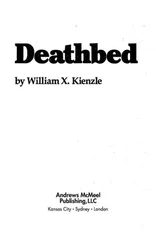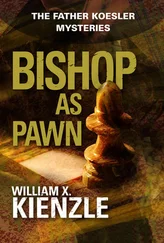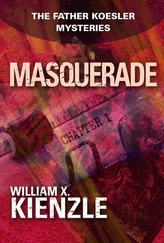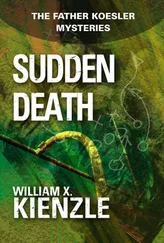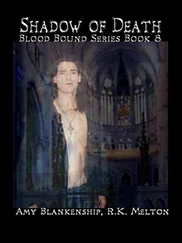There they were, the invited Detroit delegation, in full strength, such as it was. Yet it fell woefully short of filling the church.
Koesler was put in mind of the parable Jesus told of the large dinner feast that fell far short of standing room only. In that case, the master of the house sent his servant on a mission, bidding him, “Go out into the highways and along the hedgerows and force them to come in. I want my house to be full.”
If Jesus were on earth today, Koesler thought, he would not use a servant in his story. He would more probably say, “Call a press conference, make sure the local TV channels show up. Then my house will be full.”
As the bystanders filed in in a seemingly endless line, they all appeared to have the same expression: I don’t know what’s going on in here, but it must be important.
With the Rastafarian threat uppermost in their minds, Koesler, Koznicki, and Toussaint were alert to the presence of blacks in the crowd. There were, they were somewhat uneasy to note, quite a few black men in the congregation. Some were well-dressed. Some wore menial garb. Some, evidently African seminarians studying for the priesthood in Rome, wore cassocks in a variety of colors. None seemed overtly dangerous. But who could tell?
In any case, thanks to the miracle of television, a literally SRO crowd now filled all the pews, as well as the area along the back and side walls.
“Nel mone del Padre e del Figliolo e dello Spirito Santo. Cosa sia.”
What was that? Koesler wondered. Certainly not English. Nor was it Latin.
It was Italian.
Funny how insular one could become. Automatically, Koesler had equated English with the vernacular. But of course when in Rome, the vernacular was Italian. In addition, he now recalled that Boyle was fluent in Italian.
Other than enjoying the sheer beauty of the Italian language when spoken gracefully, Koesler concluded he would not derive anything significant from this liturgy. The Cardinal did in Italian speak, thought Koesler, paraphrasing Shakespeare, and those who did understand did nod their heads. But as for me, it was Italian to me.
He began to mull over the relatively brief history of the contemporary vernacular liturgy. The first document to be approved by the Second Vatican Council reinstated the use of one’s native tongue to the liturgy. It had been such a guarded step. Only a certain few parts of the Mass were to be celebrated in the vernacular. And those only after a nation’s hierarchy had officially requested such a change. And with the approval of the hierarchies of every other nation that shared that language. And finally, only after Rome had approved the request.
At the time, at least as far as the impatient liberal liturgists were concerned, implementing the decree seemed a tortuous series of red tape-bound steps. And all just so people could understand in their own language what was happening liturgically.
Little did they know the far-reaching ramifications of that simple change.
Few could have guessed at that time that this at first insignificant step into a vernacular liturgy would eventually lead to the discarding and virtual desuetude of Gregorian Chant, as well as to the disappearance of Palestrina and most of the other religious classical music that had evolved so beautifully and lovingly down through the centuries.
Koesler smiled regretfully as he considered some of the lesser and more prosaic consequences of the seemingly innocent exchange of languages.
From the time of his ordination in 1954 until the mid-sixties, he had used as a language of worship a tongue that few, if any, of his parishioners knew. Which meant that when he spoke during services, almost no one understood him.
On the one hand, that had led to a nearly universal sloppiness on the part of a great number of priests. When dispensing sacraments or sacramentals to large numbers of people, slipshod elisions became common. And few, if any, were the wiser. On the other hand, constant repetition of a formula in a foreign language frequently engendered thoughtless, absentminded mistakes. Neither of these occurrences could one get away with when speaking a language the listeners understood.
Koesler’s mind turned to Ash Wednesday. For some reason he had never fathomed, on Ash Wednesday a priest would find attending services people he would see again only on Easter, Palm Sunday, and Christmas. Easter and Christmas attendance was easy enough to understand. Perhaps the popularity of Palm Sunday and Ash Wednesday was explicable since these were the two feasts when the Church gave something away . . . even if it was only a palm frond and a thumbful of ashes.
In days gone by, the manner of distributing ashes was that a priest would dip his thumb into a container of ashes (the residue of burning old unused palms from Palm Sunday of the previous year) and trace a sign of a cross on the recipient’s forehead while saying, “Memento homo, quia pulυis es et in pulυerem reυerteris.”
Confronted by a line of people that often extended clear out of the church, many a priest found a way to zip through that formula in record-breaking time. And no one was the wiser.
Such sloppiness could not work in the vernacular, Koesler thought sheepishly; he recalled any number of times he had caught himself tracing the forehead cross while saying distractedly, “Remember dust that thou art man . . .”
There was a stirring in the church of St. John XXIII as people sat down rather firmly. Those still standing on the periphery leaned heavily against the wall.
Koesler shook his head penitently. He had daydreamed through the Mass. Evidently, now Cardinal Boyle was about to address the congregation. He had removed his liturgical vestments and stood attired in black cassock with cardinal-red accessories: piping, buttons, combination cummerbund-sash, and zucchetto. Koesler was again made aware of what an eye-popping color cardinal red was. Its 3-D-like vividness was almost breathtaking.
The Cardinal approached the lectern, adjusted his glasses, and, without script or notes, began to speak. In Italian.
Lost again! Koesler tried to understand what the Cardinal was saying, but failed. This puzzled him somewhat. Throughout this week in Rome, Koesler had managed to communicate rather well with the locals by means of a combination Latin-English-Italian.
Suddenly, it dawned on him: He had gotten on so well only because the Italians had taken the trouble to try to understand him, while, at the same time, they had spoken very slowly, simply, and distinctly.
As he sat and listened to the Cardinal speak at a normal—and, thus, to him, incomprehensible—pace, Koesler’s appreciation of and gratitude to all these kind and considerate Italians grew.
Evidently, the Cardinal had completed his remarks, whatever they were, for he stepped back from the microphone.
The monsignor who had earlier been seen leaping near the front door as a dead giveaway that the procession was not coming, stepped forward to make an announcement.
The announcement was made first in Italian, then in English. The English version ran something like: “Anna now, Hissa Eminenza Boyla, shesa gonna give-a hissa beneditzionay to-a heverybody. You come-a hup to-a da communionay railing.”
At that, it was better than Koesler could have done in Italian.
Those standing along the walls were first to form a line that began in front of the altar dedicated to St. Joseph. In no time, a double line stretched almost completely around the interior of the church.
As far as Koesler could ascertain, no one from the Detroit contingent had joined the line. The Detroiters seemed to be remaining in their pews. After all, there was no hurry; the buses would not be returning to their hotels until after the ceremony. And they weren’t going anywhere without their buses.
Читать дальше




